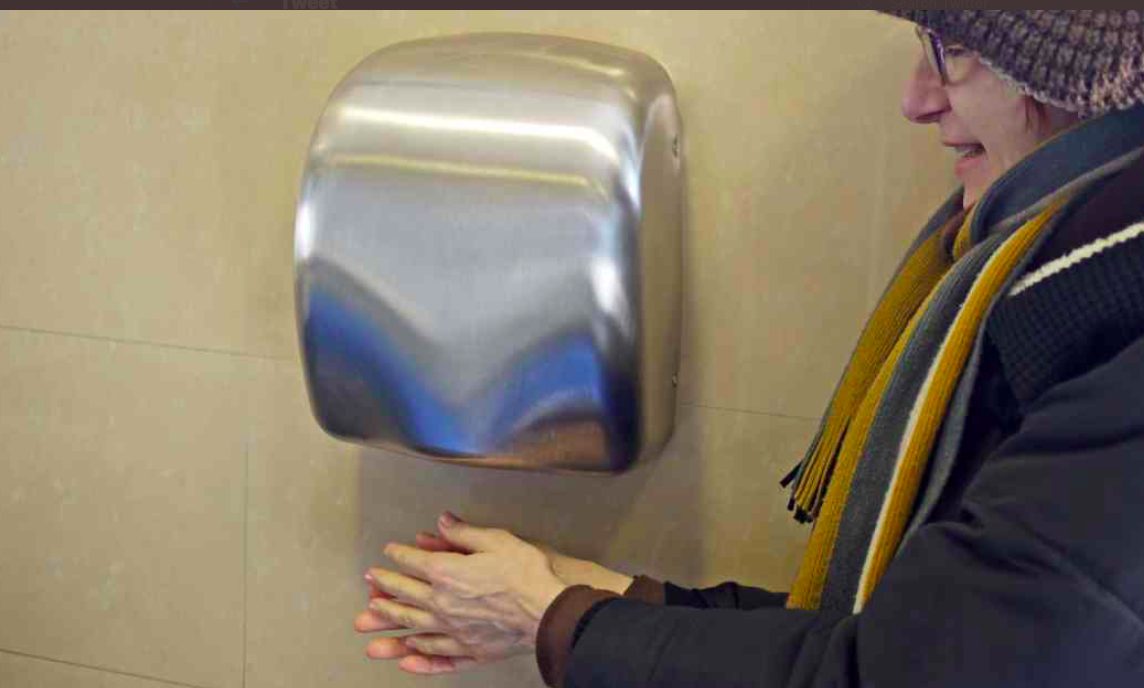In our efforts to become more eco-friendly and reduce our exploitation of nature we’ve accomplished some pretty great things. We’ve had a few misfires as well, however, and hand dryers in public restrooms might be part of the latter. That seems even clearer now as a new study piles on evidence against hand dryers and shows how they suck up fecal bacteria from the bathroom air and blow it back at our hands (1).
The study was published in the journal Applied and Environmental Microbiology and its results seem pretty conclusive.
How does it work?
Every time we flush the toilet, be it at home or in a public bathroom, as long as the lid is not closed fecal bacteria shoot into the air. This effect is called toilet plume. That’s why it’s smart to put the toilet’s lid down when flushing or to keep your toothbrushes in a bathroom cabinet.
While toilet plume is manageable in our own bathrooms, however, it’s much more difficult in public restrooms where the toilets are flushed constantly.
How much bacteria are we talking about?
During their research, researchers exposed one set of plates to 30 seconds of hand dryer restroom air and a second set – to 2 minutes of the same restroom air but with the dryers off. The results were quite surprising.
The plates exposed to hand dryers had between 18 and 60 bacteria colonies per plate while the one exposed to non-dryer restroom air had less than 1 bacteria colony per plate even though they had spent 4x more time in the restrooms.
The researchers also used a third set of plates in restroom air with only a small fan circulating the air around them – that set of plates had an average of 12 to 15 colonies per plate.
Of all the bacteria on the plates, 2 to 5% of them were spore-forming colonies called Bacillus subtilis PS533(2). B. subtilis is a naturally-occurring bacteria that are fairly benign. It’s expected to be in bathroom air with lots of toilet plume. The problem is that there are large quantities of other foreign bacteria. A lot of them are potentially pathogenic and hand dryers are an excellent way to spread them to every single person who uses the restroom.
“These results indicate that many kinds of bacteria, including potential pathogens and spores, can be deposited on hands exposed to bathroom hand dryers, ” the researchers explained. “And that spores could be dispersed throughout buildings and deposited on hands by hand dryers.”
The authors of the study also mentioned that HEPA filters installed in the hand dryers seemed to lower the spread of bacteria by a factor of 4 but not completely.
“Bacteria in bathrooms will come from feces, which can be aerosolized a bit when toilets, especially lidless toilets, are flushed.”
Hand dryers vs paper towels
As bad as hand dryers are, paper towels are pretty wasteful from an ecological standpoint. So, which should we use?
From studies such as this one, it seems clear that paper towels are the more hygienic option for us to dry our hands. At the end of the day, the negative impact of paper towels on the environment can be negated if we simply start replanting more of the forests we cut down. The negative effects of hand dryers, however, can be much more detrimental to our health.
If you want to avoid using paper towels, just keep a piece of cloth in your pockets when you go out.
